Environmental Swabs
Environmental swab testing supports foodborne illness outbreaks and investigations. Public Health Inspectors can review requirements and guidelines before submitting environmental swabs to PHO for testing.
Microbiological Analysis
PHO Laboratory performs microbiological pathogen specific testing of environmental swabs to support foodborne outbreak investigations. Environmental swabs processed during foodborne outbreak investigations will be tested for the presence or absence of a specified clinically confirmed bacterial pathogen from a physical environment (e.g., cutting board, meat slicer, etc.).
Sampling instructions for environmental swabs are provided below. Test information including testing frequency, turnaround times and reporting limits, is dependent on the specific analysis. [Click on individual testing links for test directory details - Salmonella spp., Listeria monocytogenes and E. coli O157:H7
Sample Preparation and Collection
Instruction for sample selection of swabs for an outbreak investigation:
To identify the source of the pathogen, selection of sampling sites for the investigation should be informed by environmental and epidemiological factors. Random sampling may delay the identification of the source of the outbreak. Samples deemed as most likely to be positive should be sampled and submitted first.
PHO Laboratory should be notified prior to sample submission to allow for preparation of materials required for testing. Please contact the laboratory by calling PHO Laboratory Customer Service Centre at 416-235-6556 or toll free 1-877-604-4567.
Containers for Sampling
Instructions
- Environmental swabs are available from the PHO Laboratory warehouse and can be ordered by calling the PHO Laboratory Customer Service Centre at 416-235-6556 or toll free 1-877-604-4567. The swab vial contains neutralizing solution as transport medium. This medium is able to neutralize quaternary ammonium compounds and phenolic disinfectants.
- Refer to the specific foodborne pathogen test directories, i.e., Salmonella spp., Listeria monocytogenes or E. coli O157:H7 for additional details.
- Each sample and its accompanying requisition must be labeled with a unique identifier.
Sample Preparation
The following steps are recommended to organize and minimize sample collection time:
- Investigate before sampling to determine a sampling plan.
- Ensure all materials required are available prior to collection.
- Label sample container using a permanent marker.
- Complete requisition(s) before or after, never during, sample collection.
- After collection, double check to ensure the sample unique identifier on the sample container and requisition are legible and match.
Sample Collection
Instructions
- Using aseptic technique, open the sterile swab container; grasp the handle end of the swab.
- Remove the swab aseptically being careful not to touch any portion that might be inserted into the vial.
- Moisten the swab head and press out the excess solution against the interior wall of the vial with a rotating motion.
- Hold the swab handle to make a 30 ° angle contact with the surface. Rub the surface slowly and thoroughly over approximately 50 cm2 of the surface three times, reversing direction between strokes.
- After the area has been swabbed, using aseptic technique, return the swab to the vial.
- Complete all sections of the Environmental Microbiology Investigation Requisition form with appropriate information to ensure accurate tracking of the sampling and complete all fields as outlined on page 2 of the form.
- Ensure samples are submitted to the laboratory under refrigeration conditions (2 – 8 °C) in a manner that will not leak during transport.
Considerations
- Leaking swab vials will be rejected by the laboratory. Ensure the vial is closed tightly to prevent leakage resulting in sample rejection.
- Absence of a unique identifier linking sample(s) to a sampling location on a requisition will result in rejection of sample(s) by the laboratory.
- For an investigation where sampling areas are smaller and physically different, a new swab should be used for each different area.
- For an investigation where the sample area is large, multiple sections may be swabbed with one swab. Sampling details should be accurately recorded to ensure traceability when laboratory results are received to ensure appropriate interpretation of results.
Laboratory Acceptance Criteria
The accuracy of the test results may be affected by improper collection, handling and/or shipping. Swab samples that do not meet the acceptance criteria may be rejected by the laboratory and a new sample may be re-submitted with a newly completed requisition. The acceptance criteria are outlined below.
| Description | Acceptance Reason |
| Submitter |
|
| Sample Type |
|
| Sample Requisition |
|
| Sample Collection |
|
| Sample Transport |
|
Reporting and Interpretation of Test Results
The following tables outline the reporting limits and interpretation of the environmental swab analyses. Information such as collection conditions, time and date, and sanitation details should be considered when interpreting swab results.
FOODBORNE PATHOGENS
| Testing Type | Reporting Limit | Unsatisfactory Level |
| E. coli O157:H7 | Not Detected / Detected | Detected |
| Listeria monocytogenes | Not Detected / Detected | Detected |
| Salmonella species | Not Detected / Detected | Detected |
Foodborne pathogens should not be detected from a ready-to-eat food preparation surface swab and would indicate poor food handling, inadequate work surface sanitation practices or possible contamination from an ill food handler. Appendix C: Major Foodborne Diseases: General Features provide additional information regarding the organisms incubation period, clinical symptoms, mode of transmission and associated foods.
PHO Microbiology Rounds: Welcome to the Machine (Learning): Leveraging Artificial Intelligence for Stool Parasite Detection
This PHO Microbiology Rounds will explore three such advents of AI in clinical parasitology that are in use or in development.
Don’t have a MyPHO account? Register Now

